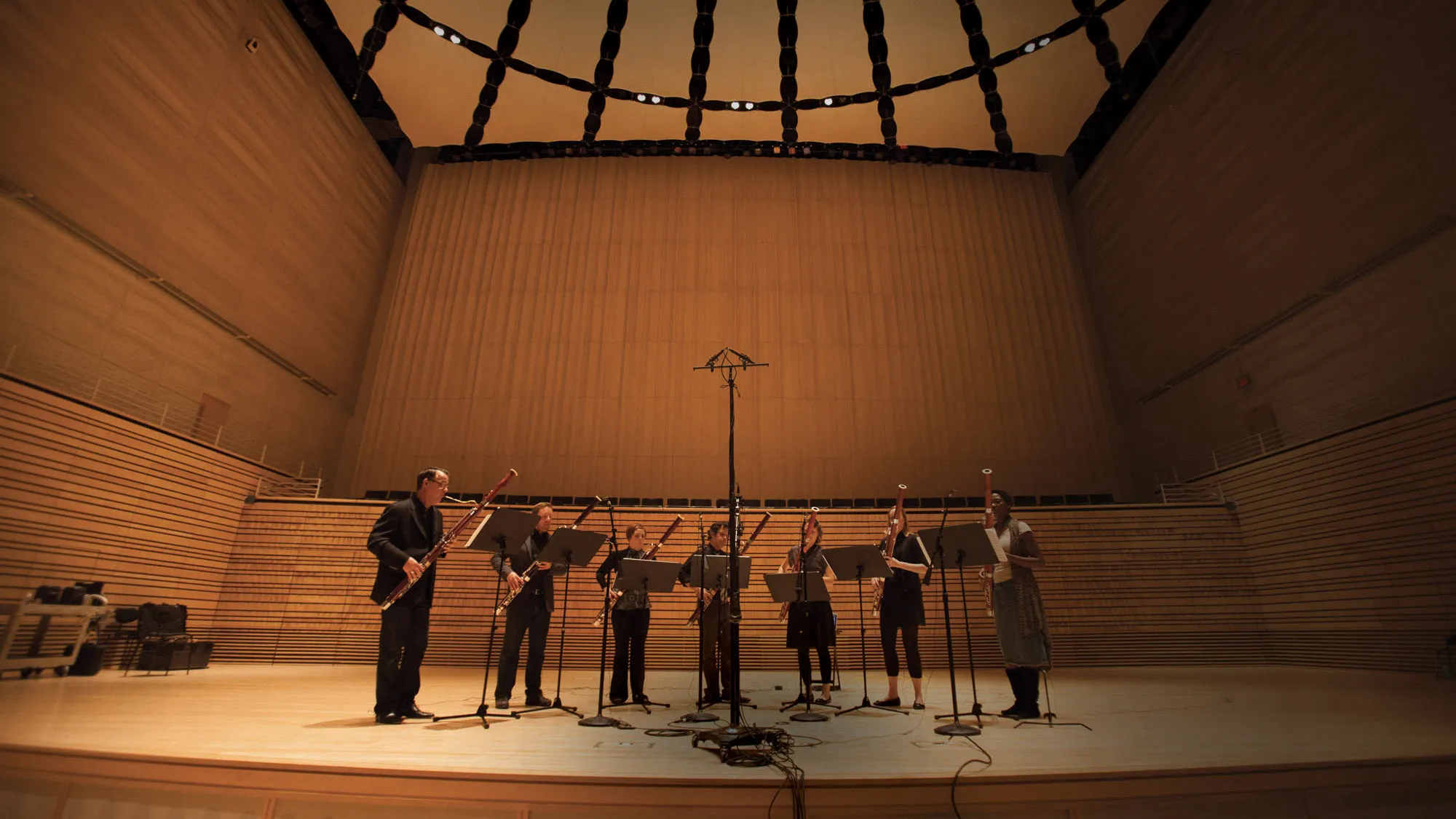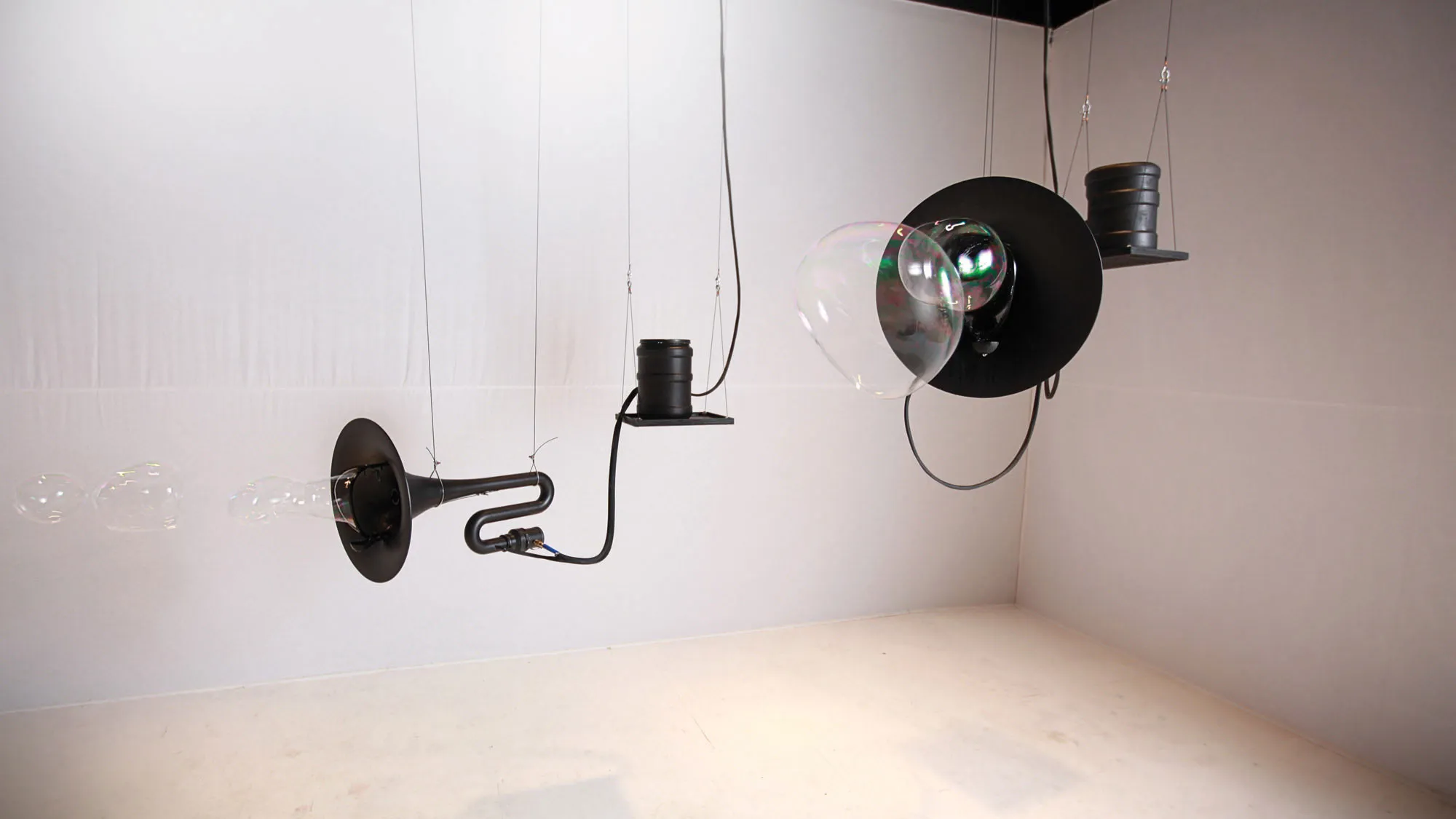
Rushes
Composer Michael Gordon rehearsed, recorded, and premiered his new work Rushes for seven bassoons. Composed with cascading waves of sound, Gordon’s composition transformed the woodwinds into something improbably electronic. A companion piece to his earlier composition Timber (which applied a similar sound layering technique to the Simantra percussion instrument), Rushes is a haunting convergence of digital and analog ambiance.
Gordon is co-founder and co-artistic director of New York City’s music collective Bang on a Can, and has produced a diverse body of work, ranging from large-scale pieces for ensembles to major orchestral commissions to works conceived specifically for the recording studio. He has been commissioned by Lincoln Center, Carnegie Hall, the BBC Proms, the Brooklyn Academy of Music, and the Sydney 2000 Olympic Arts Festival, among others.
Main Image: Rushes in the concert hall in 2012. Photo: EMPAC/Rensselaer.
